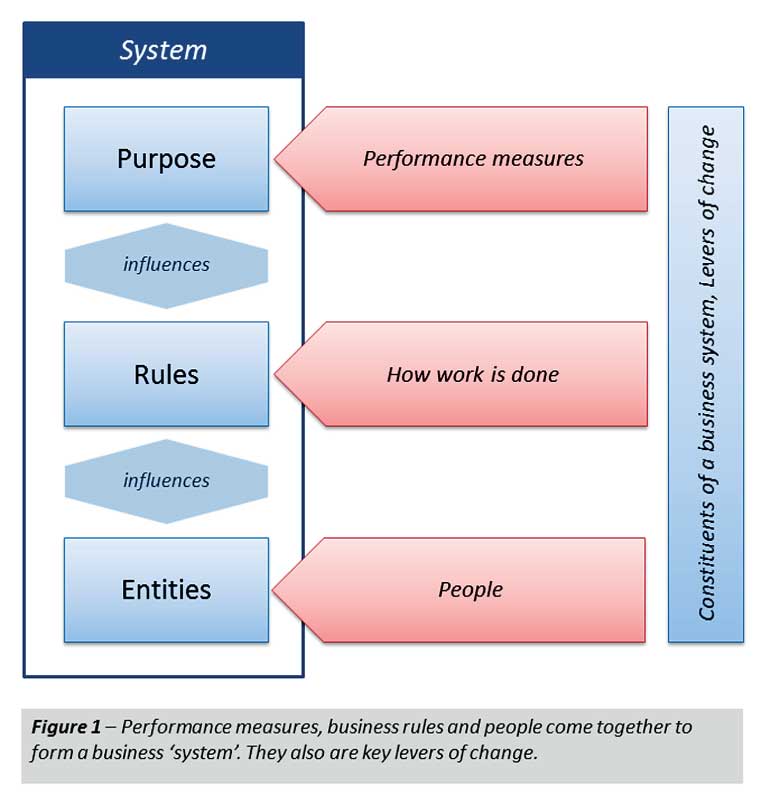Thursday Apr 25, 2024
Thursday Apr 25, 2024
Monday, 24 July 2017 00:00 - - {{hitsCtrl.values.hits}}
What is Systems Thinking?
In the modern business landscape, change has become the only constant. At all levels of a business, pressure is on to redesign, automate or otherwise improve existing practices. Everyone is looking for ways to change, and Systems Thinking is emerging as a top candidate to drive organisational change.
Contrary to what the name appears to suggest, ‘Systems Thinking’ is not about automation through IT systems, nor a set of tools that can be applied universally to gain an instant solution. It is a way of understanding organisational problems so appropriate solutions could be found.
In the early 1800s, industrial revolution marked the beginnings of mass manufacturing of goods. The established management thinking, such as specialisation and economies of scale, were born and championed under the roof of massive factories. Although the world has moved on to a service economy, industrial-age management thinking lingers on in the workplace as well as in business schools. This results in many systemic organisational problems remaining unresolved. Systems Thinking was developed to address the unfulfilled need for a way of understanding and resolving systemic problems.
Understanding the organisation as a system
A key insight of Systems Thinking is that a system causes its own behaviour, and making a persistent, positive change to a system requires the intervener to have a detailed understanding of the constituents of the system, their interactions and its overall purpose.
Let’s look at this in more detail.
A system is a set of interconnected entities that work together towards a common purpose. In the context of businesses, an entire organisation or a part of it, such as a team or a department, could be identified as a system. A system consists of three important components, which are ‘entities’, ‘rules’ and ‘purpose’. In a team, people are the entities, ways of doing business are the rules and expected outcomes are the purpose.

The formal blueprint of a team consisting of the hierarchy, vision and mission, etc...is merely ‘what the team is supposed to be’ rather than ‘what it actually is’. To understand a team’s performance and to make it better through intervention, a Systems Thinker has to go beyond the layer of paperwork and understand the real rules and purpose of a team, which may have little resemblance to what they are supposed to be.
Why this is important in the context of organisational change? A system is remarkably resilient to change. The prevalent behaviour of a system establishes over time based on its ‘real’ rules and purpose. Any change made to a system based on ‘expected’ rules and purpose will slowly but surely be ‘self-corrected’ by the system, re-establishing its former, systemic behaviour. This is a key reason for the short-lived benefits of traditional change interventions.
What would be the impact on overall system behaviour, when a change is made to each of the system components?
Let’s take an example. A Cricket team is a system. Players are the entities. Laws of the game are the rules. The team’s desire to win is the purpose. A player gets injured in practice. A bench replaces him. What would be the impact? No doubt, there would need to be a change in tactics, but the team still can play Cricket. The rules of the game are changed from that of Cricket to, say, that of Soccer. What would be the impact? Well, the team ceases to be a Cricket team. The team want to fix the match and no longer aims to win. What would be the impact? There would be no chance of winning.
As can be seen, a change to rules and purpose of a system, have much greater impact on its behaviour and performance than a change to its entities. This is, of course, not to say that entities are not important, but rather to emphasise the importance and potential of rules and purpose as levellers of change in a system.
What are rules in the context of business? These are the interconnections between the entities. What constitutes a piece of work, how work flows within the team, who can make decisions and how communication takes place. What is the purpose in the context of business? At the organisation level, this is the vision statement. But at lower levels, this boils down to criteria against which a team’s performance is measured.
Rules and purpose as key levers of change
When it comes to change, we instinctively react to undesired outcomes, and take measures to suppress such outcomes. But a Systems Thinking led study of an organisation or a team will highlight the rules and purposes that results in the undesired outcomes. More often than not, these are identified to be the existing performance measures and various means used by people to meet them. This understanding will enable managers to intervene and alter the existing rules and purposes, leading to profound and lasting change.
Prof. Russell L. Ackoff, organisational theorist and consultant, provides us with an example of how traditional performance measures  can appear beneficial from within a silo, but in reality provides bad ‘purposes’ for business functions, lead to unhealthy behaviours and prevent an organisation from reaching its goals.
can appear beneficial from within a silo, but in reality provides bad ‘purposes’ for business functions, lead to unhealthy behaviours and prevent an organisation from reaching its goals.
A sales business has purchasing and merchandising departments. Performance of the purchasing department is measured through stock turnover time. Performance of the merchandising department is measured through the value of sales. Merchandising manager does not want to risk running out of stocks and jeopardising her incentive, so she places an optimistic order with the purchasing manager. However, the purchasing manager does not want to run the risk of overstocking and harming his incentive, so he purchases a lower quantity than ordered. The merchandising manager realises this, and further increases the quantity of next order, so she would end up with the ‘optimistic’ stock, just in case. As can be seen, this leads to constant inter-department conflict, over or under stocking, lost sales and delayed deliveries.
Embedding systems thinking in an organisation
Systems thinking can be immensely beneficial for an organisation, as it helps to highlight and find solutions for chronic, systemic problems that have refused to go away under traditional approaches for change. However, it is not an easy journey and requires genuine effort from all those who are involved.
Systems Thinking requires critical review of the very workings of a business or business function, and will lead to changes in how they work and their ultimate purpose. It requires a departure from the customary approach to change projects where an external project team ‘do’ a change to another team. While traditional change initiatives act bottom-up, Systems Thinking requires everyone, regardless of where they are in the hierarchy, to take effort to recognise and change the system that they are part of.
(The writer is a Group Manager at WNS Sri Lanka, and counts 12 years of experience in the fields of Business Process Management, Banking and Finance and Information Technology. His current engagement involves Systems Thinking and process automation through RPA.)